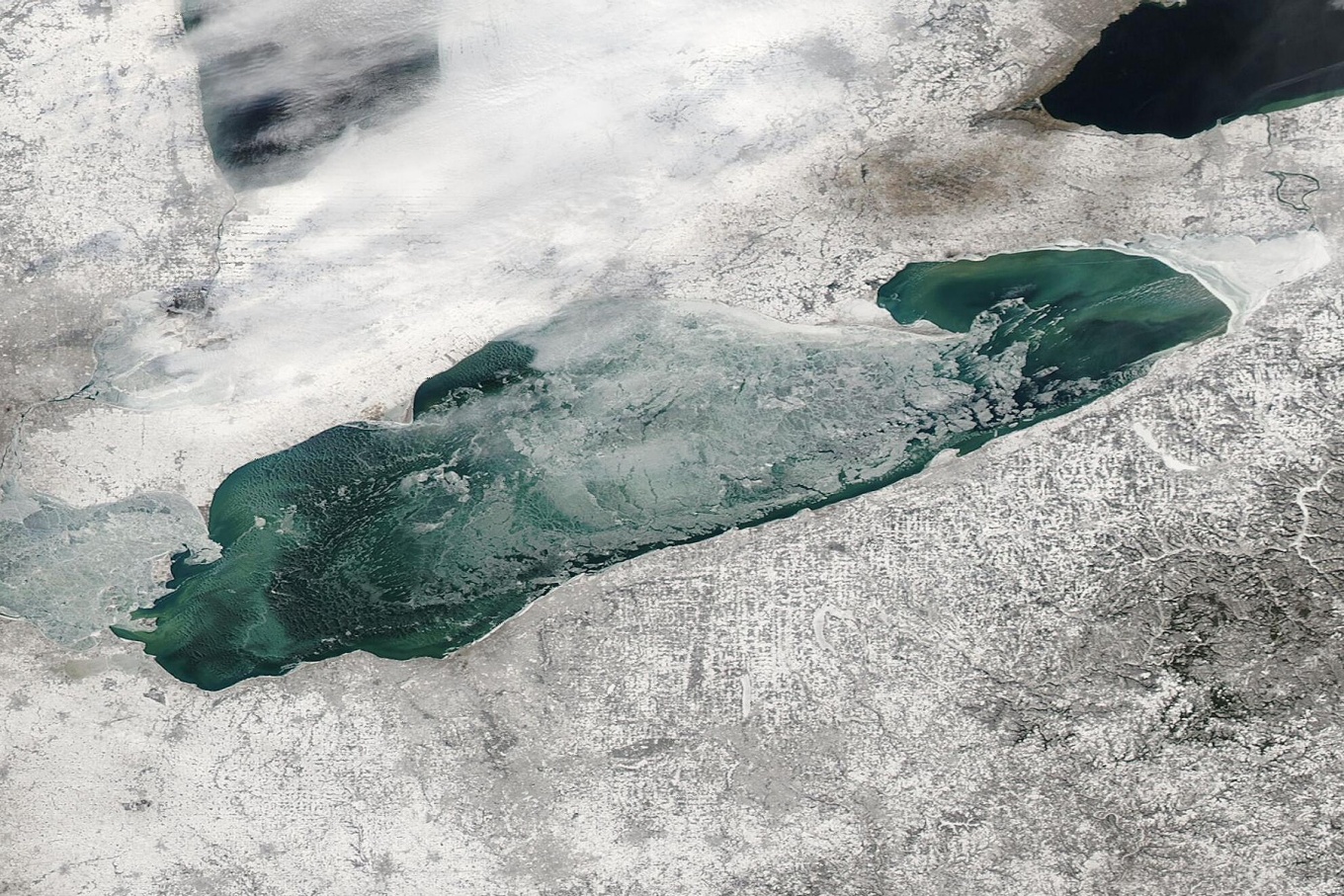research news
Will Lake Erie completely freeze over?

By Jan. 25, Lake Erie had responded to the deep Arctic blast by undergoing a rapid ice-up, with ice covering up to 86% of the lake, according to data from the National Oceanic and Atmospheric Administration. That number had grown to 95% by Feb. 20. Photo: MODIS Land Rapid Response Team, NASA GSFC
By CORY NEALON
Published February 21, 2025
Lake Erie, the shallowest of the five Great Lakes, last froze over in 1996.
With ice covering more than 95% of the lake on Thursday, and continued winter weather in the forecast, could the meteorological marvel happen in 2025?
“It’s certainly a possibility,” says Joseph Atkison, director of UB's Great Lakes Program.
As of Thursday, the entirety of the Great Lakes, which contain more one-fifth of the world's surface fresh water by volume, was more than 45% frozen, according to the National Oceanic and Atmospheric Administration (NOAA). This closely aligns with historical averages.
The other lakes — Ontario, Huron, Michigan and Superior — are just now reaching their historical average ice cover, a delay that is largely the result of surface water temperatures that remained stubbornly high last fall due to above average air temperatures, Atkinson says.
Ice cover on Lake Erie, on the other hand, has been well above average since the middle of January. This is due primarily to its average depth of 62 feet, which is considerably less than Superior (483 feet), Michigan (280 feet), Huron (195 feet) and Ontario (283 feet).
Peak ice coverage for Lake Erie is usually around 65%, occurring in late February or early March, according to NOAA. This year is different, Atkinson says, primarily due to air temperatures in January and February that have been a few degrees cooler than average.
Erie is less resistant to changes in temperature — a term that Atkinson and fellow researchers refer to as “thermal inertia” — compared to its siblings because of its average depth.
“A lot of this comes back to how deep these lakes are, and Erie has always been different because it’s much shallower,” says Atkinson.
Historically, reaching 90% or more ice coverage for Lake Erie is not unusual, he says. For example, the lake’s peak ice coverage topped 98% as recently as 2015, according to NOAA. In addition to 1996, it completely froze over in 1978 and 1979.
Whether that will happen this year depends largely on air temperatures above the lake, which NOAA predicts will rise above freezing for a few days next week before plunging downward again.
Regardless of what happens, the odds of a severe lake effect snowstorm on Lake Erie’s shores have decreased because the ice prevents the lake’s warmer surface from evaporating into the atmosphere and creating snow.
“I may be in the minority, but I’m enjoying the fact we’re having a real winter this year — it’s been a while,” Atkinson says.
